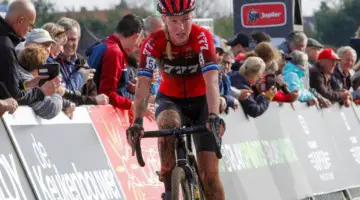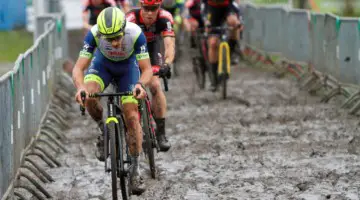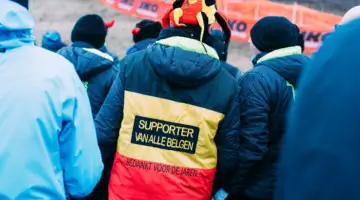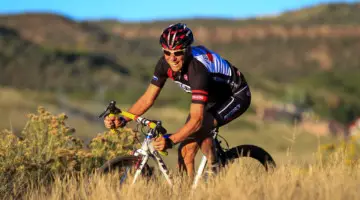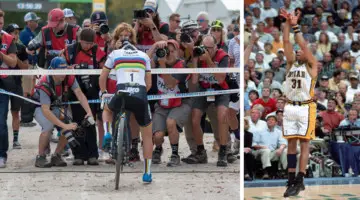Many of us are anxious to race our bikes after three months of the COVID-19 pandemic. Yet while in many areas, cyclists are still discouraged from even doing small group rides, mountain bike racing in Ohio is moving forward this Saturday. Ohio racer Brandon Grant questions the safety and risks to both the local and cycling communities of such a decision.
2020 is the year that racing doesn’t happen, unless the Mohican 100 mountain bike race in Loudonville, Ohio is on your radar. Possibly the only major race to take place this spring besides Mid-South, the Mohican 100 is pressing forward on Saturday, May 30th despite incredible push back from the local government, state officials, and the entire cycling community. Over two hundred racers are pre-registered for the event that drew 581 entrants last year.
Like other parts of the country, Ohio implemented stay at home orders soon after the COVID-19 pandemic exploded nearly two months ago. Soon after, the spring calendar started to thin as events re-evaluated their ability to host large numbers of out-of-town participants in close quarters amid a global pandemic.
Mohican 100 is a notable exception. Unlike every other race director in the Midwest, Ryan O’Dell, who also heads the NUE (National Ultra Endurance) series of which the Mohican 100 is a part, never wavered in his plan to host the race on May 30th, even as public support for the event fell away and the United States surpasses 100,000 dead as a result of the pandemic. As the date looms closer, the race has faced unpopular outlooks from racers, race directors and members of the cycling community as well as resistance from local and state governments.
Traditionally, the race has started in downtown Loudonville, a village of 2,600 people a stone’s throw from Mohican State Park, home to some of Ohio’s best mountain bike trails. As the pandemic unfolded, Loudonville denied the race permission to start downtown.
Additionally, local government denied the usual support of police to close roads and marshall intersections, as well as on-site EMS support.
The Ohio Department of Natural Resources (ODNR), who owns and operates Mohican State Park and the trail system located there, has denied the race a permit.
Despite official pleas to postpone the race, sources say public entities would consider issuing permits and lending support after July, the race moved the start and finish to private land and has developed an alternate route that omits the State Park trails, although as of May 25 there were new course markings located on the trails within the park, which is open for recreational use.
Even if the race does have a plan in place that eliminates permit only roads and trails, gathering in Ohio brings risks to the cycling community and local community. Although Governor Mike DeWine received early National praise for his response to the Coronavirus, the first wave of the virus has only just hit its peak. Although the stay at home order has been downgraded to a strong recommendation and restaurants can offer indoor dining again, the state is still very much in the grip of the pandemic.
As a result, races throughout the state such as Black Fork Gravel Grinder, which also takes place near Mohican State Park, have either canceled or postponed their events in the name of public safety leaving Mohican 100 the only race happening this spring amid a population that is still required to practice social distancing. “From all the events I have been following, both large and small, I can say [O’Dell’s response] has been very odd and more rogue,” Michael Gottfried, who finished 6th in the NUE series last year, told Cyclocross Magazine.
Beyond concerns surrounding the virus, racers have raised concerns surrounding the logistics of a half-cocked plan B course. “One hundred mile races are no easy feat in both putting on and participating,” Gottfried explained, “There is a lot of dependence the racer has on the race director and their crew… leading up to a start, communication from a director is usually pretty fluid and consistent. Sometimes that means the closer you get, the more emails or social media postings with some kind of detail. Another thing would be ensuring that a defined course is ready or close to ready with the contingency plan course. Up till about two weeks before the Mohican start, none of those boxes have been checked, with a last-minute change of start locations. Years prior to all of this, I did a race in Michigan that experienced all these things. The end result was multiple racers got lost on the course and severe weather came in. Search parties were involved. Everyone came back alive but that whole experience was the killing blow for that race.”
The Mohican 100 promoter did offer updated guidelines ten days ago:
There will be no downtown mass start. Racers will be assigned start times and depart from Mohican Adventures in small groups every one to two minutes using electronic timing. Aid stations will serve pre packaged and single serve items only. The post race party including expo and food vendors has been cancelled to prevent grouping. Racers may still register but online only at bikereg.com. There will be no registration offered at packet pickup. International Racers have been deferred and racers are able to defer to 2021.
Others echoed the danger surrounding an unknown route without the support of local officials. “I really hope if it happens it goes of safety and is a total success,” said Joe Lawhorn, a prominent member of the ultra cycling community who competed in last year’s DKXL and The Crusher, as well as finishing Race Across America. “Cause if not, Loudonville [as a venue] for events like Black Fork [Gravel Grinder] is over, we run a risk of ODNR shutting down the trails and just in general [it] would give our community a poor name.”
The optics concerned many other competitors as well. “I feel that this puts all Ohio bike events in jeopardy” Gottfried added. “We can agree that cyclists are viewed in a certain light by the public and if something goes wrong it can be a means to just stop similar events in the future.”
Such sentiment was echoed by Kari Hutson, another NUE racer and former member of the Ohio Cycling Association, the state’s USA Cycling chapter. “I am concerned about the impact this situation will have on our relationship with the community, not only with this particular event but also when other race directors want to host events in [Loudonville] again,” she explained.
Hutson raised another concern regarding future trail access. “I am also concerned about the possibility of losing trail access by moving forward without permits,” she said. Lawhorn had similar concerns and added that ODNR is on alert and looking for unauthorized trail use by the race. “I know [ODNR] are watching to make sure he doesn’t try and use the park roads or trails without a permit.”
The impact on future racing aside, the fact remains that the race will draw hundreds of participants from multiple states, exactly the sort of situation that health officials would discourage. “When I was talking to [the Loudonville government] last week, their official stance was, ‘we do not feel its safe for our residents to have 200-300 people bombarding our town in one day’,” Lawhorn said, adding that while the sheriff and local EMS will not be on-site, one government entity that will be present is the Ohio Department of Health, who will be monitoring the event for compliance with social distancing guidelines.
Ultimately the race will go on, O’Dell has shown that. If he has a plan for safely executing the race or not, the risk is extremely high. Even if the entire participating community is healthy, it may deal a publicity blow to the cycling community from which it may not recover. “From what I am gathering up to this point isn’t so much of a local community saying “No more racing” but instead “please not right now” and someone else saying “I don’t care,” Gottfried concluded. “So as a cycling community we should be asking ourselves if this is truly how we want to project ourselves to the world during this time.”
In the final hours leading up to the event, all of Ohio’s racing community is watching in hopes that participants remain safe, and the race does not damage the community’s reputation in the future. For Hutson, however, there is a stronger plea. “I hope that people are paying attention to how he’s handling this event and I hope they will use that to inform their decision on which races to participate in moving forward.”
Featured photo: Mohican 100 by Jeremy Pelaston on flickr























